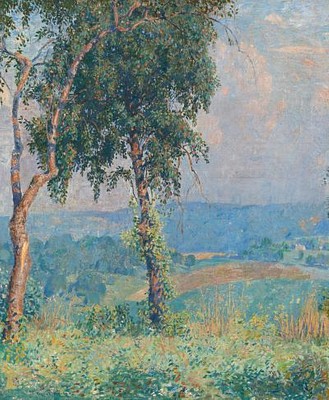Gaston Lachaise(American/French, 1882-1935)Standing Nude Woman (Standing Woman with Right Hand Raised) [LF 28], model c. 1925/1926, cast February 19
Lot 101
About Seller
Hindman
1338 West Lake Street
Chicago, IL 60607
United States
Recognized as the Midwest's leading fine art auctioneers, Hindman Auctioneers has built a worldwide reputation based on a full service approach to the auction business tailored to meet the individual needs of our clients. Coming from a variety of educational backgrounds, specialists bring years of e...Read more
Categories
Estimate:
$5,000 - $7,000
Absentee vs Live bid
Two ways to bid:
- Leave a max absentee bid and the platform will bid on your behalf up to your maximum bid during the live auction.
- Bid live during the auction and your bids will be submitted real-time to the auctioneer.
Bid Increments
| Price | Bid Increment |
|---|---|
| $0 | $25 |
| $500 | $50 |
| $1,000 | $100 |
| $2,000 | $250 |
| $5,000 | $500 |
| $10,000 | $1,000 |
| $20,000 | $2,500 |
| $50,000 | $5,000 |
| $100,000 | $10,000 |
About Auction
By Hindman
May 3, 2021
Set Reminder
2021-05-03 11:00:00
2021-05-03 11:00:00
America/New_York
Bidsquare
Bidsquare : American & European Art
https://www.bidsquare.com/auctions/hindman-auctions/american-european-art-6794
Hindman Bidsquare@hindmanauctions.com
Hindman Bidsquare@hindmanauctions.com
- Lot Description
Gaston Lachaise
(American/French, 1882-1935)
Standing Nude Woman (Standing Woman with Right Hand Raised) [LF 28], model c. 1925/1926, cast February 1982
bronze
inscribed © 1930 and G. Lachaise; stamped Lachaise Estate and 8/11; stamped with the insignia of the Modern Art Foundry, the Founder's Guild, and 1982
Height: 11¾ inches.
Provenance:
Lachaise Foundation, 1982Robert Schoelkopf Gallery, New York, February 1982 - April 1983Zabriskie Gallery, New York, March - April 1983
Robert Schoelkopf Gallery, New York, April - November 1983Private Collection, New York, acquired directly from the above, November 1983
Exhibited:
New York, Robert Schoelkopf Gallery, Gaston Lachaise: Twenty Sculptures, February 27 - March 24, 1982, n.p., illus. (as Standing Nude, 1921)Palm Springs, California, Palm Springs Desert Museum, Gaston Lachaise: 100th Anniversary Exhibition, Sculpture and Drawings, November 19 - December 19, 1982, cat. no. 18, pp. 19, 33, 43, illus. (as Standing Nude, c. 1921)New York, Zabriskie Gallery, Paul Strand: The Steiglitz Years at 291 (1915-1917), March 22 - April 23, 1983, no. 39 (as Standing Nude)
Literature:
Museum of Modern Art, Paintings and Sculpture by Living Americans: Ninth Loan Exhibition, exhibition catalogue, New York, 1930, no. 113A, p. 21, another cast referenced (as Woman, 1926)Museum of Modern Art, Gaston Lachaise, Retrospective Exhibition, exhibition catalogue, New York, 1935, no. 29, p. 25, another cast referenced (as Woman, 1926)Los Angeles County Museum of Art, Gaston Lachaise, 1882-1935: Sculpture and Drawings, exhibition catalogue, Los Angeles, 1963, no. 28, another cast illustrated (as Standing Nude, 1921)Hilton Kramer, The Sculpture of Gaston Lachaise, New York, 1967, p. 48, figs. 23, 24, another cast illustrated (as Standing Nude, 1921)Donald Bannard Goodall, Gaston Lachaise, Sculptor, PhD dissertation, Harvard University, 1969, vol. 2, pp. 107-08, 432, 435-36, pl. L [sic; L'], the patinated plaster model illustrated with the wrong caption; five other examples, including two Estate casts, referenced (as Standing Figure, Draped, 1921, and Standing Woman, Drape at Heels, Standing Draped Figure, 1930), and conflated with those of a different statuetteGerald Nordland, Gaston Lachaise: The Man and His Work, New York, 1974, no. 15, p. 72, another cast illustrated (as Standing Nude, c. 1921)Janet Hobhouse, The Bride Stripped Bare: The Artist and The Female Nude in the Twentieth Century, New York, 1988, fig. 150, p. 185, another cast illustrated (as Standing Nude, 1921)Salander-O'Reilly Galleries, LLC, Gaston Lachaise: Sculpture and Drawings, exhibition catalogue, New York, 1998, pl. 14, n.p., another cast illustrated (as Standing Nude, 1921).Virginia Budny, "Gaston Lachaise's American Venus: The Genesis and Evolution of Elevation," The American Art Journal, vols. 34-35, 2003-2004, p. 128n. 106, another cast referenced (as after 1925).James Donald Burke, The Saligman Collection: Saint Louis, Portland, Oregon, 2012, pp. 88-89, 202, 214, another cast illustrated (as Standing Nude, 1921)Christie's, Rockefeller Center and the Rise of Modernism in the Metropolis, exhibition catalogue, New York, 2015, p. 4, another cast illustrated (as Standing Nude, Right Hand Raised [LF 28])Bernard Goldberg Fine Arts, LLC, Gaston Lachaise: For the Love of Woman, exhibition catalogue, New York, 2016, fig. 12, pp. 6, 8-9, 34-35, 40, another cast illustrated (as Woman (Standing Nude with Right Hand Raised) [LF 28], circa 1925-26; cast circa 1930)
Lot essay:
Gaston Lachaise's Woman (Standing Woman with Right Hand Raised) [LF 28], which represents a stately, self-possessed, goddess-like nude, powerfully realizes his principal ambition: to glorify the human body by amplifying and simplifying its anatomical forms. The statuette also exemplifies his typical method for achieving this stated goal. It was created by reworking a plaster model of a standing nude that he had freely executed in about 1912-13, and that appears to have spontaneously been inspired by Isabel Dutaud Nagle (1972-1957), his lover and muse from about 1903, and wife from 1917. (The unique bronze cast of that early work is illustrated in V. Budny, "Gaston Lachaise's American Venus: The Genesis and Evolution of Elevation," The American Art Journal, vols. 34-35, 2003-2004, fig. 31, p. 100).
When revising the earlier model, in about 1925 or 1926, he retained most of the nude's pose, yet augmented the forms of her body by adding a pliable material, such as clay or Plasticine, to the plaster model to make them altogether more voluptuous, rhythmically coherent, and imposing. He then made a plaster cast of this second version to serve as the model in the bronze casting process. This characteristic working method appears to have been mastered by Lachaise in his native Paris at the Bernard Palissy School of Applied and Industrial Art, where he was trained before attending the Ecole des Beaux-Arts, or in the studio of the art nouveau designer Rene Lalique (1860-1945), where he briefly worked to earn passage to America in 1906 in pursuit of his great love, Isabel. It was also evidently employed by him when creating the powerful, iconic sculptures of female nudes by which he is chiefly known today, such as his heroic Standing Woman (Elevation) [LF 55] (1912-15), The Art Institute of Chicago, and Standing Woman [LF 92] (1928-30), The Museum of Modern Art, New York.
A small number of bronze casts of Woman (Standing Woman with Right Hand Raised) are known to have been made during Lachaise's lifetime. The first, dating from 1926, was sold by gallerist Alfred Stieglitz (1864-1946) to music critic Paul Rosenfeld (1890-1946). It was exhibited at The Museum of Modern Art, New York, in 1930-31 and 1935, and in the retrospective held at the Whitney Museum of American Art, New York, and then at the Brooklyn Museum of Art in 1937-38. It is now unlocated. Four years after that cast had been produced, Lachaise inscribed the copyright date of 1930 on his plaster model, and this new inscription was reproduced on the subsequent bronzes that were made from the model, including the only lifetime example to have been located in recent decades. (That cast is now in a private collection.) The Lachaise Foundation, established in 1963 to administer the artist's estate, owns Lachaise's plaster model and authorized an Estate edition of eleven bronze casts, ordering the first two in 1964. Six more casts (including the present example) were produced by 1988. Since then, no others have been made.
We are grateful to Virginia Budny, author of the forthcoming catalogue raisonne sponsored by the Lachaise Foundation, for her assistance in preparing the catalogue entry for this work.For condition inquiries please contact marygracebilby@hindmanauctions.comCondition
- Shipping Info
-
Please refer to https://hindmanauctions.com/shipping-packing
-
- Buyer's Premium



 EUR
EUR CAD
CAD AUD
AUD GBP
GBP MXN
MXN HKD
HKD CNY
CNY MYR
MYR SEK
SEK SGD
SGD CHF
CHF THB
THB![Gaston Lachaise(American/French, 1882-1935)Standing Nude Woman (Standing Woman with Right Hand Raised) [LF 28], model c. 1925/1926, cast February 19](https://s1.img.bidsquare.com/item/l/8231/8231144.jpeg?t=1LttjW)
![Gaston Lachaise(American/French, 1882-1935)Standing Nude Woman (Standing Woman with Right Hand Raised) [LF 28], model c. 1925/1926, cast February 19](https://s1.img.bidsquare.com/item/s/8231/8231144.jpeg?t=1LttjW)














